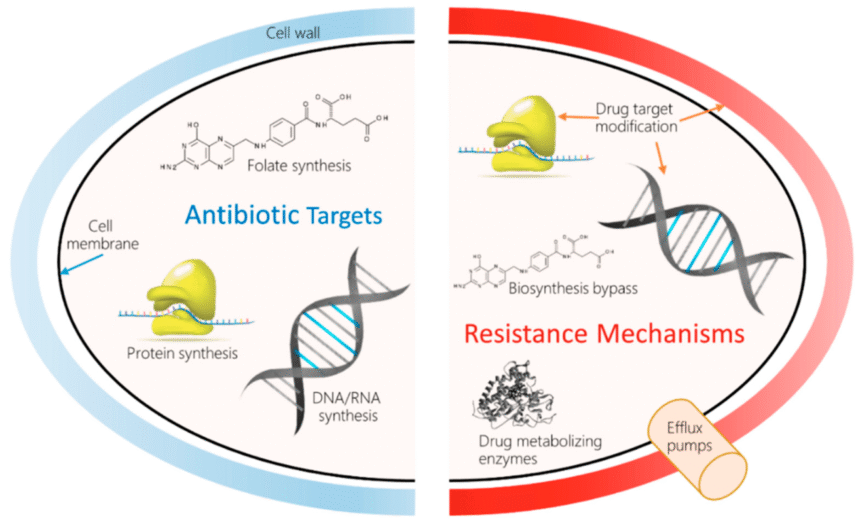Rising Antibiotic Resistance: Antibiotics have long been the cornerstone of modern medicine, treating infections that once claimed millions of lives worldwide. However, recent evidence indicates that this life-saving arsenal is losing its effectiveness at an alarming rate. A report from the World Health Organization’s Antimicrobial Resistance (AMR) Division reveals that antibiotic resistance continues to rise globally, posing a serious threat to public health. Routine infections that were once easily treatable are now becoming increasingly difficult to manage, particularly in low- and middle-income countries where healthcare infrastructure and diagnostic capabilities remain limited. The report underscores a worrying trend: the uneven distribution of AMR across regions, reflecting systemic inequities in access to diagnostics, surveillance, and effective treatments.
The WHO established the Global Antimicrobial Resistance and Use Surveillance System (GLASS) in 2015 to monitor AMR patterns worldwide. Initially focused on collecting standardized data on resistant infections, GLASS expanded in 2020 to include antimicrobial use (AMU), providing a comprehensive understanding of how antibiotics are being utilized and how resistance is developing. The 2025 report analyzes data from more than 23 million bacteriologically confirmed infections in 104 countries, covering 22 antibiotics and eight major bacterial pathogens. These findings are not only a wake-up call for policymakers but also highlight critical gaps in global surveillance, particularly in countries that lack the resources for systematic monitoring.
The global landscape of AMR is complex and multifaceted. Resistance is not evenly distributed; certain pathogens, infections, and regions are disproportionately affected. Urinary tract infections and bloodstream infections, for example, are showing significantly higher resistance levels compared to gastrointestinal infections. Meanwhile, Gram-negative bacteria such as Escherichia coli, Klebsiella pneumoniae, and Acinetobacter species are driving much of the rising threat, with resistance rates in some regions exceeding 70%. The report also signals emerging threats, including potential resistance to last-resort antibiotics for gonorrhoea, raising urgent concerns for future treatment protocols.
Global Expansion of AMR Surveillance
Since its inception, GLASS has dramatically expanded its reach. Participation has grown fourfold, with 127 countries now enrolled and 104 actively submitting AMR data. This coverage now represents over 70% of the global population, reflecting a significant step forward in monitoring resistant infections. The scope of data collection has widened, focusing on urinary tract, bloodstream, and gastrointestinal infections, indicating broader adoption of standardized antimicrobial susceptibility testing.
However, participation is uneven. The Americas and Western Pacific regions show the lowest engagement, and only about half of the reporting countries have all essential surveillance components in place. Global data completeness remains at 53.8%, leaving large gaps in representativeness. Many low-resource countries still struggle with limited laboratory infrastructure and lack advanced molecular or automated testing, which hampers both data quality and clinical decision-making.
Read about: Three-Year-Old Dies Shortly After Receiving Polio Vaccine in Sangareddy
Widespread and Uneven Resistance Patterns
Globally, 17.2% of laboratory-confirmed bacterial infections in 2023 involved antibiotic-resistant pathogens, roughly one in six infections. Resistance levels vary significantly by infection type, with urinary tract and bloodstream infections exhibiting the highest prevalence, while gastrointestinal infections remain relatively lower.
Geographical disparities are stark: South-East Asia and the Eastern Mediterranean report resistance in around one in three pathogen-antibiotic combinations, while the Western Pacific has the lowest rates, approximately one in eleven. Common Gram-negative pathogens like E. coli and K. pneumoniae demonstrate extensive resistance to third-generation cephalosporins and fluoroquinolones, exceeding 70% in some African regions. Carbapenem resistance in Acinetobacter species reached a global rate of 54.3%, and methicillin-resistant Staphylococcus aureus (MRSA) continues to affect 27.1% of bloodstream infections.
Gonorrhoeal infections show near-universal resistance to fluoroquinolones (75%), though ceftriaxone resistance remains low. Experts warn that emerging ceftriaxone resistance could undermine the last reliable empirical therapy for gonorrhoea, raising alarms for global sexual health management.

Rising AMR Trends and Systemic Inequities
Between 2018 and 2023, AMR increased in 40% of monitored pathogen-antibiotic combinations, with the sharpest rises in Gram-negative bacteria, including E. coli, K. pneumoniae, and Acinetobacter spp. Resistance to carbapenems and fluoroquinolones is increasingly constraining treatment options, often necessitating costly intravenous therapies or last-resort antibiotics.
Countries with limited surveillance capacity report the highest resistance rates, reflecting a vicious cycle where weak health systems exacerbate AMR. Many observations derive from selective sampling in tertiary hospitals, where severe cases are overrepresented, potentially inflating resistance estimates. Low- and middle-income countries face the greatest burden, where poor diagnostics, overuse of Watch antibiotics, and insufficient stewardship accelerate the development of resistance. In 2022, Access antibiotics accounted for only 52.7% of global use, far below the WHO target of 70% by 2030, while Watch antibiotics represented 45.3%, signaling inadequate global antibiotic stewardship.
Conclusion
The rise of antibiotic resistance represents one of the most pressing global health challenges of the 21st century. Routine infections are becoming increasingly difficult to treat, threatening decades of progress in modern medicine. The WHO’s 2025 AMR report emphasizes that while global surveillance has expanded, significant gaps remain, particularly in regions with weaker health systems. Without urgent interventions, resistant infections could overwhelm healthcare facilities and undermine life-saving treatments.
Addressing this crisis requires a multi-pronged approach. Strengthening surveillance infrastructure, particularly in low- and middle-income countries, is critical for accurate data collection and informed policymaking. Equally important is promoting responsible antibiotic use through stewardship programs that prioritize Access antibiotics while limiting the overuse of Watch and Reserve antibiotics.
Public awareness and healthcare education also play a vital role. Individuals must understand the importance of completing prescribed antibiotic courses and avoiding self-medication. Healthcare providers need continuous training to recognize resistant infections early and apply evidence-based treatment protocols.
Finally, global collaboration is key. Countries must share surveillance data, best practices, and innovative treatment approaches to contain AMR. Investment in new antibiotics, rapid diagnostics, and alternative therapies can complement existing strategies, ensuring that humanity remains equipped to fight bacterial infections effectively. Without such coordinated action, the world risks a return to a pre-antibiotic era where routine infections can once again become life-threatening.
Also read: Toyota C-HR+ (2025): The Electric Evolution of Toyota’s Boldest Crossover
FAQs of Rising Antibiotic Resistanc
1. What is antibiotic resistance, and why is it a global threat?
Antibiotic resistance occurs when bacteria evolve to survive exposure to antibiotics that previously killed them. This reduces the effectiveness of standard treatments, making infections harder to cure and increasing the risk of complications, hospitalizations, and deaths. Globally, AMR threatens modern medicine, including surgeries, cancer therapies, and neonatal care, which rely heavily on effective antibiotics.
2. Which bacteria are most responsible for rising resistance?
Gram-negative bacteria such as E. coli, Klebsiella pneumoniae, and Acinetobacter spp. are leading contributors to the AMR crisis. These pathogens often show high resistance to widely used antibiotics, including third-generation cephalosporins, fluoroquinolones, and carbapenems. MRSA and resistant gonorrhoea also remain significant public health concerns.
3. Why are low- and middle-income countries more affected by AMR?
LMICs face challenges such as limited laboratory infrastructure, inadequate diagnostic capabilities, weak surveillance systems, and overuse of antibiotics. These systemic weaknesses, combined with selective testing and reliance on broad-spectrum antibiotics, accelerate the spread of resistant infections.
4. How does WHO monitor antibiotic resistance worldwide?
The WHO monitors AMR through the Global Antimicrobial Resistance and Use Surveillance System (GLASS). This system collects standardized data on resistant infections and antimicrobial use from participating countries, allowing for global, regional, and national assessments. GLASS also evaluates the maturity and completeness of national surveillance systems.
5. What steps can be taken to combat antibiotic resistance?
Combating AMR requires a multi-faceted approach:
- Strengthening surveillance and laboratory capacity.
- Implementing robust antibiotic stewardship programs.
- Encouraging public awareness about responsible antibiotic use.
- Investing in new antibiotics, rapid diagnostics, and alternative treatments.
- Promoting global collaboration to share data and best practices.
